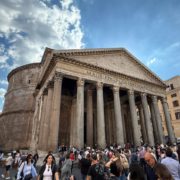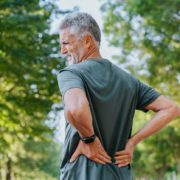Back Surgery Is Rarely the Answer – Here’s What to Know First
Back Surgery Is Rarely the Answer — Here’s What to Know First
The number of times this week I’ve heard people talk excitedly about their upcoming back surgery has genuinely left me disheartened. Not because surgery never has a place — but because it highlights just how misunderstood non-surgical healing for back pain still is.
No matter how much education I share, or how much research exists showing that back surgery is not the guaranteed fix people think it is, many individuals still give up far too quickly and default to surgery.
So here I am again — speaking from clinical experience, personal experience, published research, and thousands of patient stories — to say this clearly: back surgery is rarely the only option, and it is almost never the best first option.
Why Back Surgery Often Fails to Deliver Long-Term Relief
Each year in the United States, tens of thousands of adults undergo back surgery in an effort to relieve pain. Yet even with modern surgical techniques, long-term success is far from guaranteed.
A 2023 systematic review published in the Journal of Pain Research found that approximately 15% of patients experience ongoing or recurring pain after spine surgery, commonly referred to as failed back surgery syndrome. Other peer-reviewed spine and pain studies show persistent pain rates ranging from 5–30%, depending on the procedure and patient population.
Re-operation rates are also concerning. A 2022 nationwide cohort study published in Scientific Reports found that 14–18% of patients required another back surgery within five years. For individuals who had already undergone spinal surgery, the likelihood of needing additional surgery was even higher.
Once someone enters the surgical pathway, it often becomes increasingly difficult to step off it.
The Real Risks of Back Surgery People Don’t Talk About
While these percentages may not seem overwhelming at first glance, they matter — especially when you consider the very real risks of back surgery, including:
- Infection
- Blood clots
- Nerve damage
- Adverse reactions to anesthesia
- Incomplete or temporary pain relief
And something research doesn’t always capture: surgery cannot be undone. This reality is rarely emphasized enough during decision-making.
Why “Trying Everything” Often Isn’t Really Trying Everything
This is why exploring conservative, non-surgical back pain treatment is so important — but not in a random or unstructured way.
Many people tell me they’ve already tried physical therapy, chiropractic care, massage, acupuncture, injections, or exercise and that nothing worked. When we look closer, most have spent years cherry-picking treatments without a clear strategy.
They often repeat the same generalized approaches, layer too many treatments at once, or rely entirely on passive care to fix what is actually an active, mechanical back problem.
Passive Care Can Help — But It Isn’t Enough
Passive treatments like massage, acupuncture, and chiropractic care can be incredibly effective for calming pain and reducing inflammation. But pain relief is not the same as healing.
Without pairing passive care with precise corrective movement and tissue-specific loading strategies, relief is usually temporary — and confusing.
The Role of Modern, Non-Surgical Regenerative Therapies
In recent years, I’ve seen remarkable results using non-invasive regenerative shockwave and electromagnetic therapies to stimulate blood flow, cellular repair, and tissue regeneration in damaged muscles, tendons, ligaments, and irritated nerves.
These treatments don’t simply mask pain. They support the body’s natural healing response, improving tissue quality and reducing inflammation so meaningful recovery can occur.
When used strategically — and combined with the right movement-based care — these therapies have been a game-changer in my Portsmouth practice, helping many people avoid injections, delay or prevent surgery, and finally heal for the long term.
Most Back Pain Is Mechanical — Not Surgical
Approximately 80% of back pain is mechanical in nature. It develops gradually from how we move, sit, train, work, and recover.
Even when pain appears suddenly, the underlying problem has usually been building for years. No surgery, injection, or generic exercise program can correct poor movement patterns or faulty spinal mechanics.
Until those issues are addressed, pain tends to return — even after surgery.
Why Seeing a Back Pain Specialist Matters
After more than 23 years working with people suffering from back pain and sciatica, I can confidently say this: the difference between a generalist and a specialist is profound.
For the first decade of my career, I worked in traditional, insurance-driven physical therapy settings. I followed prescriptions, used common passive treatments, and truly believed I was doing everything right.
Everything changed when I pursued advanced specialty training and learned how to properly assess, classify, and treat mechanical back pain. That shift allowed me to help people not only get out of pain — but keep it gone and avoid surgery altogether.
Before You Say Yes to Back Surgery — Pause
If you’re dealing with persistent back pain and feel surgery is being presented as your only option — especially if you’ve already tried traditional physical therapy — please pause.
Our back pain specialists in the Seacoast focus exclusively on these problems and understand how to combine movement science with modern regenerative therapies.
Before you say yes to back surgery, make sure you’ve truly exhausted every conservative option available. Natural healing is not only possible — it is often the most effective and longest-lasting solution when done correctly.
Dr. Carrie Jose, Physical Therapy Specialist and Mechanical Pain Expert, owns CJ Physical Therapy & Pilates in Portsmouth, NH, and writes for the Seacoast Media Group.
To get in touch — or request a free discovery visit with one of our specialists — visit our website or call 603-380-7902.











